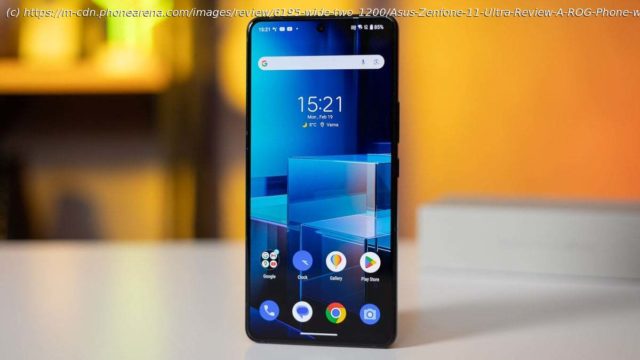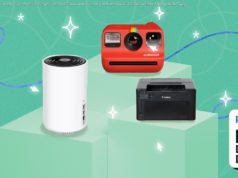The Zenfone goes Ultra! Asus attempts to go neck in neck with the big boys.
Asus Zenfone 11 Ultra Intro
In the past few years, Asus has carved a niche of its own in the smartphone carpentry, so to speak. The Zenfone line has been focusing on small and powerful Android flagships since the Zenfone 8, and the idea was perfected with last year’s Zenfone 10.
Fast forward to… now, and we have a very different picture and a shift to the aforementioned focus. Enter the Zenfone 11 Ultra. It’s a departure from the „compact“ idea and a venture into the „ultra“ territory for Asus.
The phone is big, packed full of hardware and software features, and could potentially cater to all those Asus fans who wanted a large screen phone but, for some reason, didn’t like the ROG series. Today we’re going to find out how good the first attempt by Asus to give us an Ultra flagship is.
6.78-inch LTPO screen, 120Hz (144Hz), 2,500 nits peak brightness
New 32MP, 3X optical zoom telephoto camera
5,500mAh battery with 65W fast wired charging and wireless charging support
12/256GB base memory configuration
Snapdragon 8 Gen 3
AI Experience
Table of Contents:
Specs
Design and Colors
Display
Camera
Performance
Software
Battery and Charging
Audio Quality
Alternatives
Summary
Asus Zenfone 11 Ultra SpecsLook, there’s a telephoto camera now!
SpecsAsus Zenfone 11 Ultra
Size and Weight 163.8 x 76.8 x 8.9 mm
224 grams
Display 6.78″ OLED
120Hz (144Hz)
2,500 nits peak brightness
Processor Snapdragon 8 Gen 3
Software Android 14
Cameras 50MP main, f/1.9 aperture
13MP ultra-wide, f/2.2
32MP 3X zoom, f/2.4
32MP front
Battery Size 5,500 mAh
Charging Speeds 65W via cable
15W wireless
Prices 12/256GB for $899
16/512GB for $999
Asus Zenfone 11 Ultra Design & ColorsROG Phone without LEDs?
The Zenfone 11 Ultra looks oddly similar to the ROG Phone 8 (Image credit – PhoneArena)
In stark contrast to previous Zenfone models, the Zenfone 11 Ultra takes pages from the ROG book. The phone is substantial and far from the compact footprint of its predecessors, with a flat 6.78-inch screen and ever-so-slightly curved back glass.
The back is light blue or gray with a frosted glass matte finish and glossy lines running across, creating a cool pattern. The camera bump is protruding quite a bit from the body and houses the three cameras and an LED flash.
One thing worth mentioning is that Asus has decided to put almost all ports on the bottom, there’s the USB-C port on the left, the SIM tray, and next to it is the loudspeaker. A 3.5mm jack completes the picture. And the picture is quite busy. There’s nothing on the left side of the phone and on the top side, too.
Overall, it’s a clean design, but it reminds me too strongly of the ROG Phone 8 Pro. The camera bump, overall shape and size, the screen, the layout of the buttons—it’s all identical between the two phones. Which begs the question: why do we need a non-gaming ROG version called Zenfone Ultra? But more on that later.
The charger is gone… (Image credit – PhoneArena)
Time for the Asus Zenfone 11 Ultra unboxing treat. Sadly, there’s some good news and some bad news. The bad news is that there’s no charger in the box, so in order to take full advantage of the supported 65W fast charging, you have to get the appropriate fast charging brick.
The good news is that there’s a plastic back cover included, so you don’t have to buy a case. Funny thing: with the cover on, the Zenfone 11 Ultra looks even more similar to the ROG Phone 8. There’s also a USB-C cable inside the box and some paperwork (probably informing you how many dolphins have been saved by not including a charger in the retail box).
Asus Zenfone 11 Ultra Display
The OLED panel inside the Zenfone 11 Ultra is great! No doubt about it. It’s very bright (actually, it’s currently sitting at the top of our own brightness test), it can do a 1-120Hz dynamic refresh rate (plus 144Hz in game mode), and it’s pretty color accurate as well.
The 6.78-inch screen comes with a resolution of 1080 x 2400 pixels, resulting in around 388 PPI pixel density, which is not super high, but the image is still pretty crisp and detailed.
There are several settings to fine tune your picture as well. You can choose from Optimal, Natural, Cinematic, and Standard color settings, customize the colors via a slider, and also control the color temperature. There are nice options such as always-on, lift to check, night light, smart screen, and more.
Display Measurements:
Screen measurements
Color charts
Maximum brightnessHigher is betterMinimum brightness(nits)Lower is betterColor temperature(Kelvins)GammaDelta E rgbcmyLower is betterDelta E grayscaleLower is better
Asus Zenfone 11 Ultra 1649
(Excellent) 5.9
(Good) 6640
(Excellent) 2.24
1.577
(Excellent) 5.63
(Average)
Asus ROG Phone 8 Pro 1589
(Excellent) 5.8
(Good) 6675
(Excellent) 2.24
1.46
(Excellent) 5.3
(Average)
OnePlus 12 1120
(Excellent) 1.8
(Excellent) 6464
(Excellent) 2.31
1.45
(Excellent) 4.11
(Average)
Google Pixel 8 Pro 1449
(Excellent) 1.9
(Excellent) 6895
(Excellent) 2.22
1.43
(Excellent) 5.23
(Average)
View
all
Color gamut
Color accuracy
Grayscale accuracy
The CIE 1931 xy color gamut chart represents the set(area)of colors that a display can reproduce,with the sRGB colorspace(the highlighted triangle)serving as reference.The chart also provides a visual representation of a display’s color accuracy. The small squares across the boundaries of the triangle are the reference points for the various colors, while the small dots are the actual measurements. Ideally, each dot should be positioned on top of its respective square. The ‚x:CIE31‘ and ‚y:CIE31‘ values in the table below the chart indicate the position of each measurement on the chart. ‚Y‘ shows the luminance (in nits) of each measured color, while ‚Target Y‘ is the desired luminance level for that color. Finally, ‚ΔE 2000‘ is the Delta E value of the measured color. Delta E values of below 2 are ideal.
These measurements are made using Portrait Displays‘ CalMAN calibration software.
Asus Zenfone 11 Ultra
Asus ROG Phone 8 Pro
OnePlus 12
Google Pixel 8 Pro
The Color accuracy chart gives an idea of how close a display’s measured colors are to their referential values. The first line holds the measured (actual) colors, while the second line holds the reference (target) colors.






